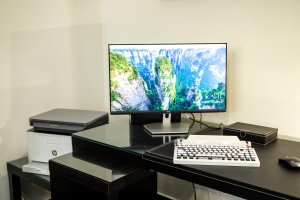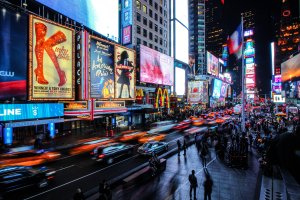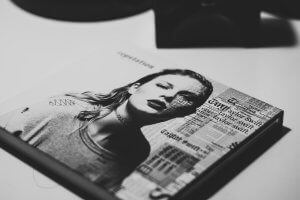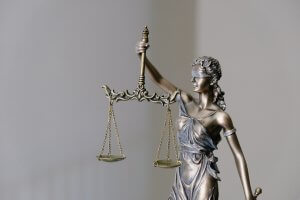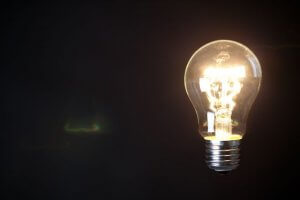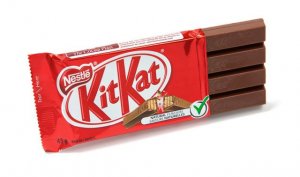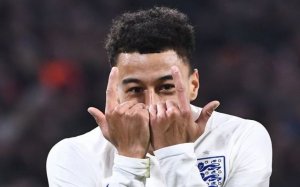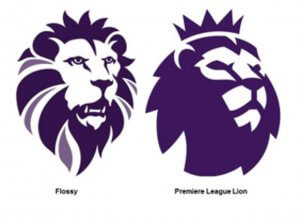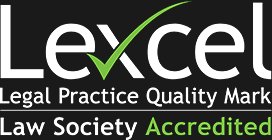- Intellectual property
- Digital

Longer Reads
Does UK Copyright law provide adequate protection to creators of Generative AI artworks?
What does copyright protect under English law?
3 minute read
Published 1 September 2023
Key information
Copyright is a property right which recognises an author’s creativity and originality. It arises automatically on the creation of an original work – one which “expresses” the “intellectual creation of an author”.
Copyright subsists in a variety of original works, including literary, dramatic, musical or artistic works.
“Artistic works” are defined to include a graphic work, photograph, sculpture or collage, irrespective of artistic quality.
The copyright owner has the exclusive right to carry out the following restricted acts:
– to copy the work;
– to issue copies of the work to the public;
– to rent or lend the work to the public;
– to perform, show or play the work in public;
– to communicate the work to the public; and
– to make an adaptation of the work or do any of the above in relation to an adaptation.
Carrying out any of the above restricted acts without the permission of the copyright owner amounts to a primary act of copyright infringement.
How does Generative AI produce artwork?
Generative AI is a type of AI system that is trained on (or “learns” from), vast quantities of material scraped from the internet, including images, videos, audio, text and 3D models, in order to generate new outputs.
AI image generators are proving hugely popular. These are system powered by AI, which produce images to match text inputs. They can be used to create images “in the style” of other artists. The results have received wide publicity, and artists are growing increasingly concerned about a practice which appears to ignore their rights in their own creativity.
Stable Diffusion is described as “a latent text-to-image diffusion model capable of generating photo-realistic images given any text input” that “empowers billions of people to create stunning art within seconds”.
The image generator was launched in August 2022 by Stability AI, and is trained on the data set LAION – Large-scale Artificial Intelligence Open Network, which claims to be a non-profit organization making machine learning resources available to the general public.
Other text-to-image generators include Midjourney, “an independent research lab exploring new mediums of thought and expanding the imaginative powers of the human species”, and DeviantArt, “the largest online social network for artists and art enthusiasts, and a platform for emerging and established artists to exhibit, promote, and share their works”, which has a text-to-image generator called DreamUp.
What are the Copyright issues?
Issues arise when the underlying content in a database used to train AI systems is protected by copyright. If the database contains works of individual artists which are protected by copyright, and those artists are unaware of (and have therefore not consented to) the use of their works in training image generator, insufficient protection is provided to artists, who have no effective control over the use of their works.
Objections to such unauthorised use are being pursued both in the US and in the UK.
In January 2023, cartoonist Sarah Andersen, artist and illustrator Kelly McKernan and concept artist Karla Ortiz filed a lawsuit in California(1) against UK-based Stability AI Ltd and US-incorporated Stability AI Inc, Midjourney Inc and DeviantArt Inc. The plaintiffs describe AI image generators as “21st-centry collage tools that violate the rights of millions of artists”. The plaintiffs argue that Stability AI acquired billions of copyrighted images without permission, created compressed files without the consent of or providing compensation to the artists, and that the “resulting derived images compete in the marketplace with the original images. Until now, when a purchaser seeks a new image “in the style” of a given artist, they must pay to commission or license an original image from that artist”.
In response, Stability AI, Midjourney and DeviantArt filed a motion to dismiss the lawsuit, to which the plaintiffs’ filed oppositions. At a hearing in July, the judge said that although he was inclined to dismiss most of the lawsuit, he would allow a new complaint to be filed. The judge stated, “I don’t think the claim regarding output images is plausible at the moment, because there’s no substantial similarity”.
Shortly after the filing of the Andersen lawsuit in the US, Getty Images, the stock image provider, filed an application(2) at the London High Court for an injunction preventing Stability AI from selling its AI image-generated system in Britain, claiming Stability AI’s use of its images to train its system amounts to breach of copyright, and that the infringement has been integral to the success of its business.
Stability AI is also facing a claim brought by Getty in the US in February 2023(3). Getty is accusing Stability AI of using of over 12 million copyright protected images, without permission. Stability AI has applied to dismiss the motion. Stability AI has filed motions to dismiss on various grounds.
The outcome of these cases will give some indication as to how the clash between generative AI and copyright protection might be resolved going forward. Although US decisions are not binding in UK proceedings, they may provide persuasive precedent, especially as the legal area is a new one, and binding precedent may therefore not be available.
Some will argue that the process of selecting and formulating a text prompt to be fed into in an image greater is a creative act in itself which should result in copyright protection being conferred both on the instructions and on the artistic output. However, this is a separate issue from the question whether, in creating the artistic output, the image generation program has reproduced a substantial part of one or more existing copyright works, which would constitute an act of infringement of those works.
In the meantime, a number of organisations have been created to lobby for greater protection for the creators of the artworks which have been subsumed into the image generators, including the European Guild of Artificial Intelligence Regulation, which aims to create legislation and regulation to “protect copyright holders and artists from predatory AI companies”. This organisation was created to extend the work of the Concept Art Association of America, (which is US-based and works to promote protection within the US legislative framework) into the EU.
Technological tools are also being developed to provide greater protection for artists. Ben Zhao, Professor of Computer Science at the University of Chicago, has created a free software tool, Glaze, which he describes as “a system designed to protect human artists by disrupting style mimicry”. At a high level, Glaze works by understanding the AI models that are being trained on human art, and using machine learning algorithms, producing a set of minimal changes to artworks, such that they appear unchanged to human eyes, but appear to AI models like a dramatically different art style.
Clearly, the issue is a fast-evolving one. There will be pressure on the legal framework to keep up with the challenges posed by advancements in technology, and to balance innovation with copyright protection. Assuming at least one of the cases in the US or the UK proceeds to a judgment, the approach taken by the Courts will be of great interest in the continuing debate.
For more information, visit our Intellectual Property lawyers page.
This article was published by Arts Professional on 9 November 2023.
(1) Andersen v. Stability AI Ltd. (3:23-cv-00201)
(2) GETTY IMAGES (US), INC. and others v Stability Al Ltd
(3) Getty Images (US), Inc. v. Stability AI, Inc. (1:23-cv-00135)
Related content
Longer Reads
Does UK Copyright law provide adequate protection to creators of Generative AI artworks?
What does copyright protect under English law?
Published 1 September 2023
Associated sectors / services
Authors
Copyright is a property right which recognises an author’s creativity and originality. It arises automatically on the creation of an original work – one which “expresses” the “intellectual creation of an author”.
Copyright subsists in a variety of original works, including literary, dramatic, musical or artistic works.
“Artistic works” are defined to include a graphic work, photograph, sculpture or collage, irrespective of artistic quality.
The copyright owner has the exclusive right to carry out the following restricted acts:
– to copy the work;
– to issue copies of the work to the public;
– to rent or lend the work to the public;
– to perform, show or play the work in public;
– to communicate the work to the public; and
– to make an adaptation of the work or do any of the above in relation to an adaptation.
Carrying out any of the above restricted acts without the permission of the copyright owner amounts to a primary act of copyright infringement.
How does Generative AI produce artwork?
Generative AI is a type of AI system that is trained on (or “learns” from), vast quantities of material scraped from the internet, including images, videos, audio, text and 3D models, in order to generate new outputs.
AI image generators are proving hugely popular. These are system powered by AI, which produce images to match text inputs. They can be used to create images “in the style” of other artists. The results have received wide publicity, and artists are growing increasingly concerned about a practice which appears to ignore their rights in their own creativity.
Stable Diffusion is described as “a latent text-to-image diffusion model capable of generating photo-realistic images given any text input” that “empowers billions of people to create stunning art within seconds”.
The image generator was launched in August 2022 by Stability AI, and is trained on the data set LAION – Large-scale Artificial Intelligence Open Network, which claims to be a non-profit organization making machine learning resources available to the general public.
Other text-to-image generators include Midjourney, “an independent research lab exploring new mediums of thought and expanding the imaginative powers of the human species”, and DeviantArt, “the largest online social network for artists and art enthusiasts, and a platform for emerging and established artists to exhibit, promote, and share their works”, which has a text-to-image generator called DreamUp.
What are the Copyright issues?
Issues arise when the underlying content in a database used to train AI systems is protected by copyright. If the database contains works of individual artists which are protected by copyright, and those artists are unaware of (and have therefore not consented to) the use of their works in training image generator, insufficient protection is provided to artists, who have no effective control over the use of their works.
Objections to such unauthorised use are being pursued both in the US and in the UK.
In January 2023, cartoonist Sarah Andersen, artist and illustrator Kelly McKernan and concept artist Karla Ortiz filed a lawsuit in California(1) against UK-based Stability AI Ltd and US-incorporated Stability AI Inc, Midjourney Inc and DeviantArt Inc. The plaintiffs describe AI image generators as “21st-centry collage tools that violate the rights of millions of artists”. The plaintiffs argue that Stability AI acquired billions of copyrighted images without permission, created compressed files without the consent of or providing compensation to the artists, and that the “resulting derived images compete in the marketplace with the original images. Until now, when a purchaser seeks a new image “in the style” of a given artist, they must pay to commission or license an original image from that artist”.
In response, Stability AI, Midjourney and DeviantArt filed a motion to dismiss the lawsuit, to which the plaintiffs’ filed oppositions. At a hearing in July, the judge said that although he was inclined to dismiss most of the lawsuit, he would allow a new complaint to be filed. The judge stated, “I don’t think the claim regarding output images is plausible at the moment, because there’s no substantial similarity”.
Shortly after the filing of the Andersen lawsuit in the US, Getty Images, the stock image provider, filed an application(2) at the London High Court for an injunction preventing Stability AI from selling its AI image-generated system in Britain, claiming Stability AI’s use of its images to train its system amounts to breach of copyright, and that the infringement has been integral to the success of its business.
Stability AI is also facing a claim brought by Getty in the US in February 2023(3). Getty is accusing Stability AI of using of over 12 million copyright protected images, without permission. Stability AI has applied to dismiss the motion. Stability AI has filed motions to dismiss on various grounds.
The outcome of these cases will give some indication as to how the clash between generative AI and copyright protection might be resolved going forward. Although US decisions are not binding in UK proceedings, they may provide persuasive precedent, especially as the legal area is a new one, and binding precedent may therefore not be available.
Some will argue that the process of selecting and formulating a text prompt to be fed into in an image greater is a creative act in itself which should result in copyright protection being conferred both on the instructions and on the artistic output. However, this is a separate issue from the question whether, in creating the artistic output, the image generation program has reproduced a substantial part of one or more existing copyright works, which would constitute an act of infringement of those works.
In the meantime, a number of organisations have been created to lobby for greater protection for the creators of the artworks which have been subsumed into the image generators, including the European Guild of Artificial Intelligence Regulation, which aims to create legislation and regulation to “protect copyright holders and artists from predatory AI companies”. This organisation was created to extend the work of the Concept Art Association of America, (which is US-based and works to promote protection within the US legislative framework) into the EU.
Technological tools are also being developed to provide greater protection for artists. Ben Zhao, Professor of Computer Science at the University of Chicago, has created a free software tool, Glaze, which he describes as “a system designed to protect human artists by disrupting style mimicry”. At a high level, Glaze works by understanding the AI models that are being trained on human art, and using machine learning algorithms, producing a set of minimal changes to artworks, such that they appear unchanged to human eyes, but appear to AI models like a dramatically different art style.
Clearly, the issue is a fast-evolving one. There will be pressure on the legal framework to keep up with the challenges posed by advancements in technology, and to balance innovation with copyright protection. Assuming at least one of the cases in the US or the UK proceeds to a judgment, the approach taken by the Courts will be of great interest in the continuing debate.
For more information, visit our Intellectual Property lawyers page.
This article was published by Arts Professional on 9 November 2023.
(1) Andersen v. Stability AI Ltd. (3:23-cv-00201)
(2) GETTY IMAGES (US), INC. and others v Stability Al Ltd
(3) Getty Images (US), Inc. v. Stability AI, Inc. (1:23-cv-00135)
Associated sectors / services
- Intellectual property
- Digital
Authors
Need some more information? Make an enquiry below.
Subscribe
Please add your details and your areas of interest below
Article contributor
Patrick
WheelerPartner - Head of IP & Data Protection
Specialising in Intellectual property disputes, Data protection, Digital, Intellectual property and Manufacturing
Enjoy reading our articles? why not subscribe to notifications so you’ll never miss one?
Subscribe to our articlesMessage us on WhatsApp (calling not available)
Please note that Collyer Bristow provides this service during office hours for general information and enquiries only and that no legal or other professional advice will be provided over the WhatsApp platform. Please also note that if you choose to use this platform your personal data is likely to be processed outside the UK and EEA, including in the US. Appropriate legal or other professional opinion should be taken before taking or omitting to take any action in respect of any specific problem. Collyer Bristow LLP accepts no liability for any loss or damage which may arise from reliance on information provided. All information will be deleted immediately upon completion of a conversation.
Close

